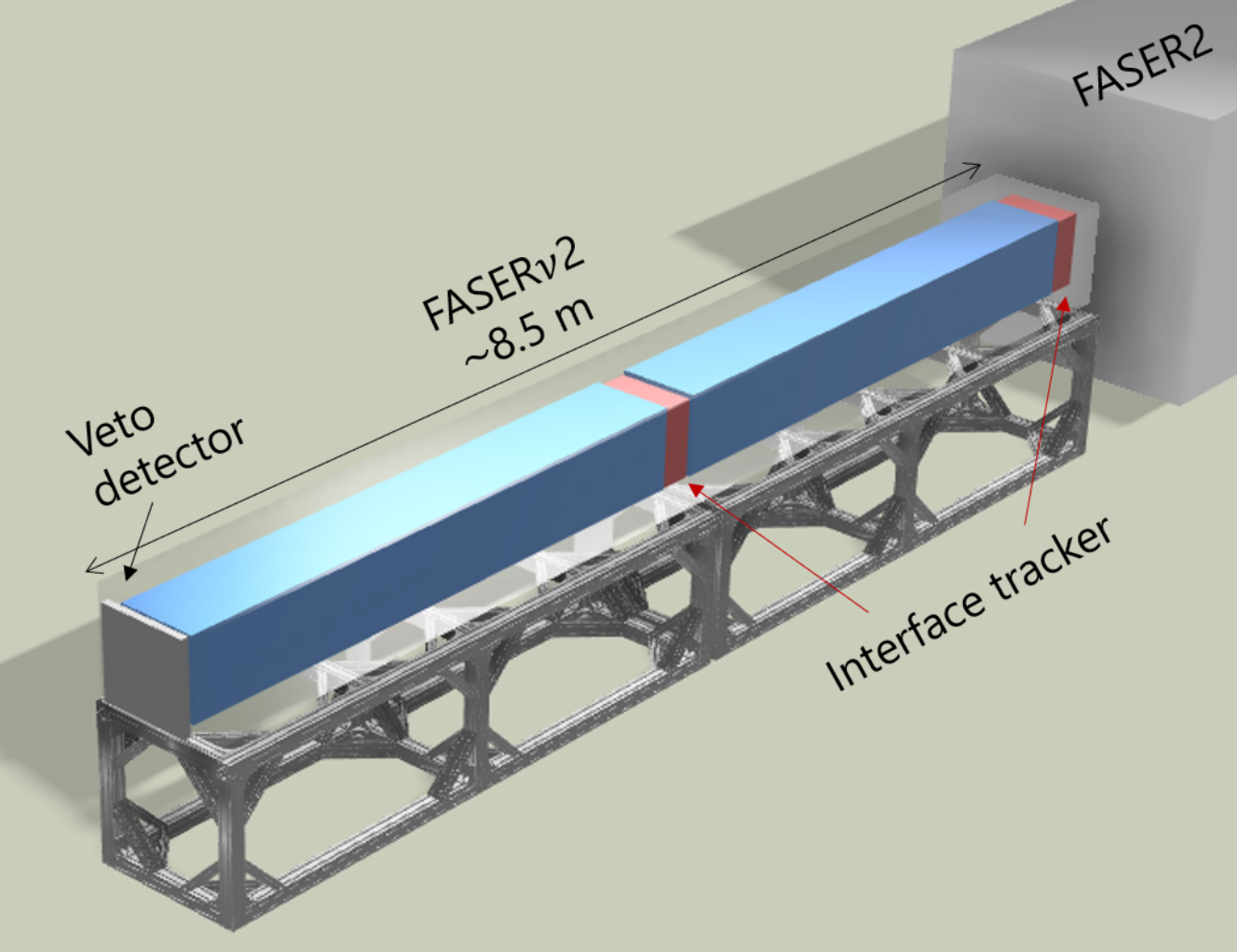FASERν2 is a 20-ton neutrino detector located on the LOS, a much larger successor to the FASERν subdetector in the FASER experiment. An emulsion-based detector will identify heavy flavor particles produced in neutrino interactions, including tau leptons and charm and beauty particles. FASERν2 can perform precision tau neutrino measurements and heavy flavor physics studies, testing lepton universality in neutrino scattering and new physics effects, as well as providing important input to QCD and astroparticle physics.
Below, we can see the schematic of the proposed FASERν2 detector, which is composed of 3300 emulsion layers interleaved with 2-mm-thick tungsten plates.

The total volume of the tungsten target is 40 cm × 40 cm × 6.6 m, with a mass of 20 tons. The detector will be placed directly in front of the FASER2 spectrometer along the LOS. The FASERν2 detector will also include a veto system and interface detectors to the FASER2 spectrometer, with one interface detector in the middle of the emulsion modules and the other detector downstream of the emulsion modules. These additional systems will enable a FASER2-FASERν2 global analysis and make measurement of the muon charge possible, a prerequisite for ντ/ν ̄τ separation. The veto system will be scintillator-based, and the interface detectors could be based on silicon strip sensors or scintillating fiber tracker technology. The detector length, including the emulsion films and interface detectors, will be approximately 8 m.
As the cτ of the tau lepton is 87 μm, a high-precision emulsion detector is essential to detect tau decays topologically. After optimizations of the detector performance (in terms of precision, sensitivity, and long-term stability), we will use an emulsion gel with silver bromide crystals of 200 nm diameter and a volume occupancy of 35%, which provides an intrinsic position resolution of 50 nm. The emulsion detector will be placed in a cooling box and kept at around 10◦ C to avoid fading of the recorded signal. Emulsion detector analysis is limited by the accumulated track density and becomes very difficult above 106 tracks/cm2. To keep the accumulated track density at an analyzable level, the emulsion films will be replaced once per year, with a total of 520 m2 of emulsion film used annually. The implementation of an effective sweeper magnet to reduce the muon fluence in the FPF would be very beneficial for the FASERν2 experiment, and studies on possible designs for this are ongoing.
The emulsion film production and its readout will be conducted at facilities in Japan. The capacity of the film production facility is 1200 m2 per year. The HTS scanning system can read out ∼0.5 m2 per hour, or 1,000 m2 per year. Analysis methodologies dedicated to TeV-neutrinos are currently being developed and tested for the FASERν experiment. These methods include momentum measurements using multiple Coulomb scattering information, electromagnetic shower reconstruction, and machine learning algorithms for neutrino energy reconstruction.
FASERν2 has a clear and broad physics target, and the detector is based on a well-tested technology for tau neutrino and short-lived particle detection. Further studies will be carried out to optimize the detector performance, the detector operational environment, and the installation scheme.
